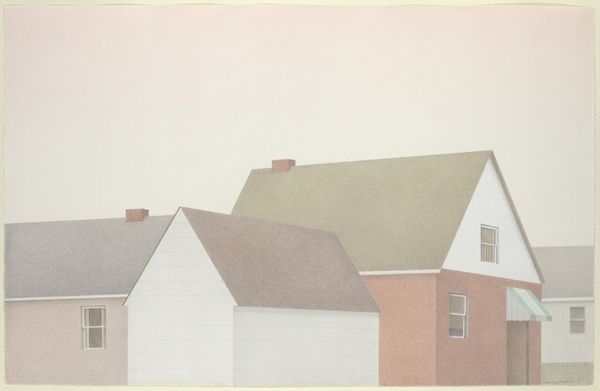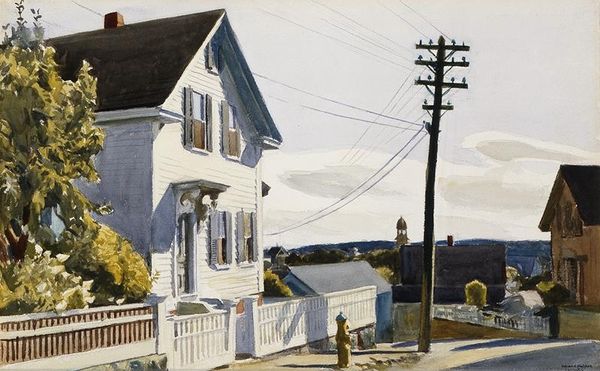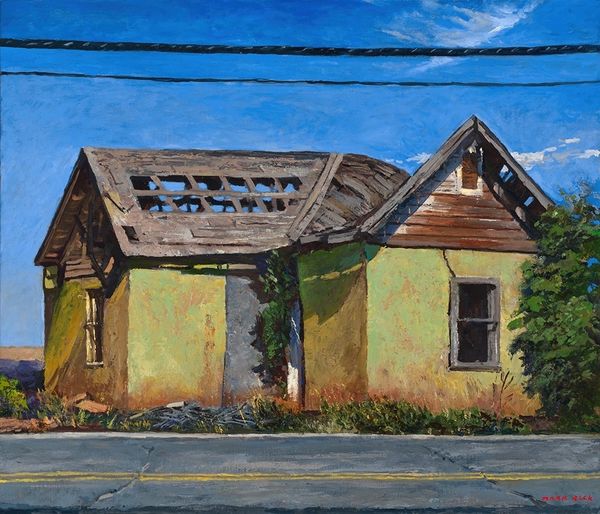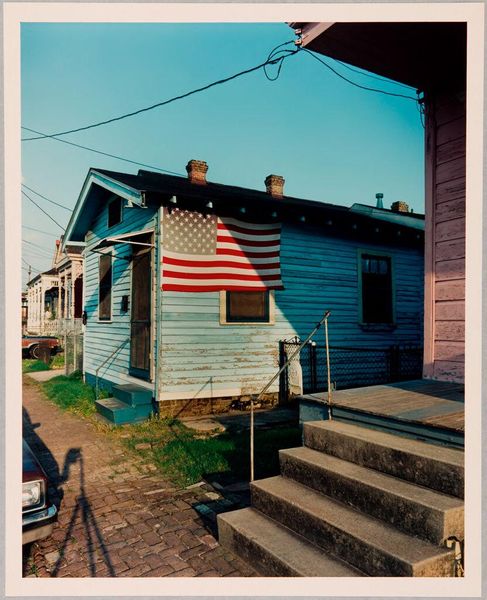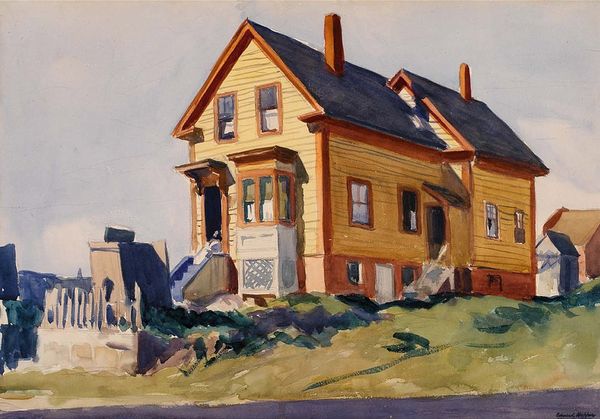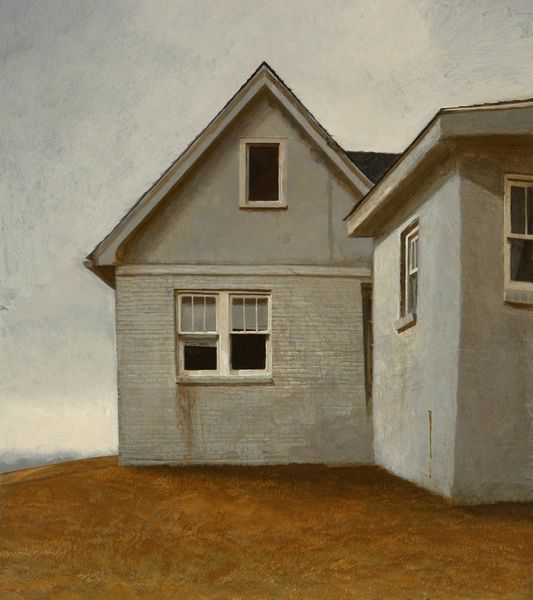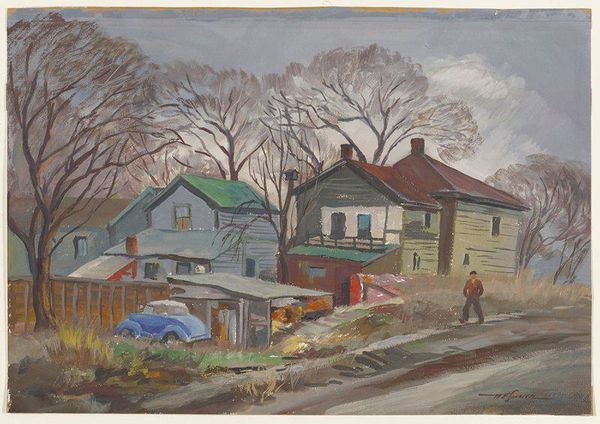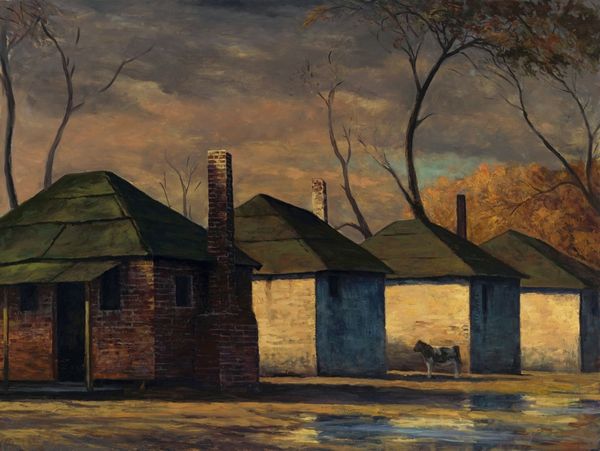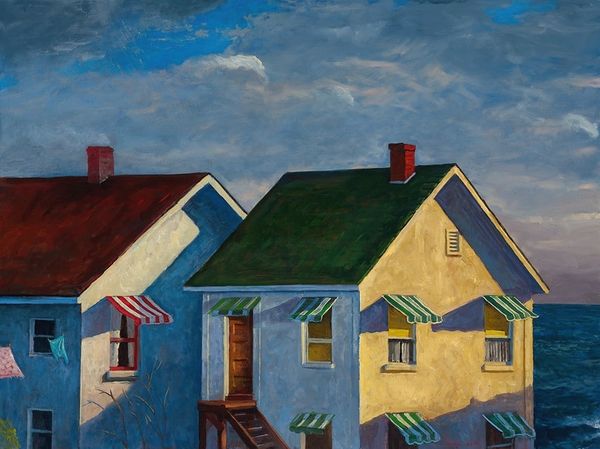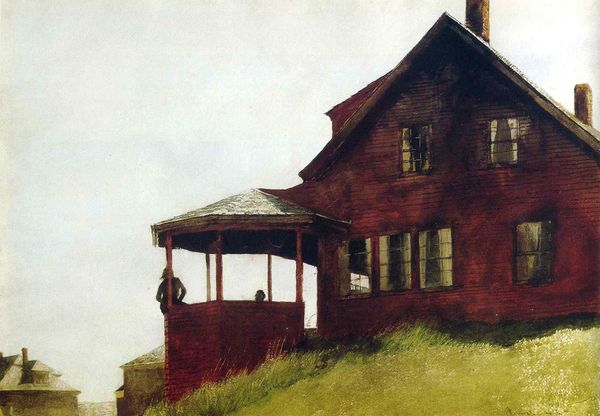
plein-air, oil-paint
#
plein-air
#
oil-paint
#
landscape
#
oil painting
#
urban environment
#
modernism
#
regionalism
#
realism
Dimensions: overall: 122.1 x 182.9 cm (48 1/16 x 72 in.) framed: 125.1 x 185.4 cm (49 1/4 x 73 in.)
Copyright: National Gallery of Art: CC0 1.0
Curator: Let’s spend some time discussing Billy Morrow Jackson's oil painting from 1967, titled "Eve". It’s a striking depiction of a house, overlaid with themes of American identity and domestic life. What stands out to you initially? Editor: There's a distinct moodiness, a somber atmosphere that pervades the scene. The muted color palette, predominantly grays and whites, adds to the sense of stillness, even melancholy. The scale of the house is imposing. Curator: Absolutely. The stark realism is typical of Regionalism; however, what fascinates me is how Jackson connects it with a broader social commentary. Think about the materiality itself: the weathered wood of the house, the aged paint, how that echoes the state of the nation in the late '60s. What does it mean to present the flag on a dilapidated structure like this? Editor: Visually, it's a juxtaposition that creates tension. The flag, with its bright red and white stripes, offers the only real contrast to the otherwise monochromatic setting. It’s visually symbolic against the architectural backdrop that's fading; there is a striking tension of texture against symbolic subject. The surface is almost a topographical study, isn’t it? Curator: Precisely! The textures, rendered with oil paint, almost narrate the socioeconomic conditions and post-war changes that small towns experienced. The worn facade, plus Jackson's careful choice of subject: a weathered American home, are far more than decorative choices. Think about who is represented in landscape painting from the time period: the painting captures shifting national paradigms and regional anxieties about industrialization. Editor: The window framing looks almost like stagecraft – yet it grounds itself in stark realism. It captures the ordinary in an elegant way. And there’s that lone figure sitting on the porch—adds to the contemplative, almost haunting atmosphere. The flag becomes not a triumphant symbol, but perhaps a complicated, and weary, commentary on a specific point in US history. Curator: Yes, and through the formal composition – color, shape and texture, we’re drawn to understand it better, beyond any simplistic notion of "Americana." Jackson uses art to comment on American identity as something complicated. Editor: It definitely feels more complex than a celebration. More like a questioning—of values, of ideals, mirrored in that aged façade. Curator: Indeed. Jackson forces us to reconcile iconic symbolism with the material realities that underpinned everyday life. Editor: So even through formal analysis, there is so much social commentary. Thanks for unpacking that!
Comments
No comments
Be the first to comment and join the conversation on the ultimate creative platform.
